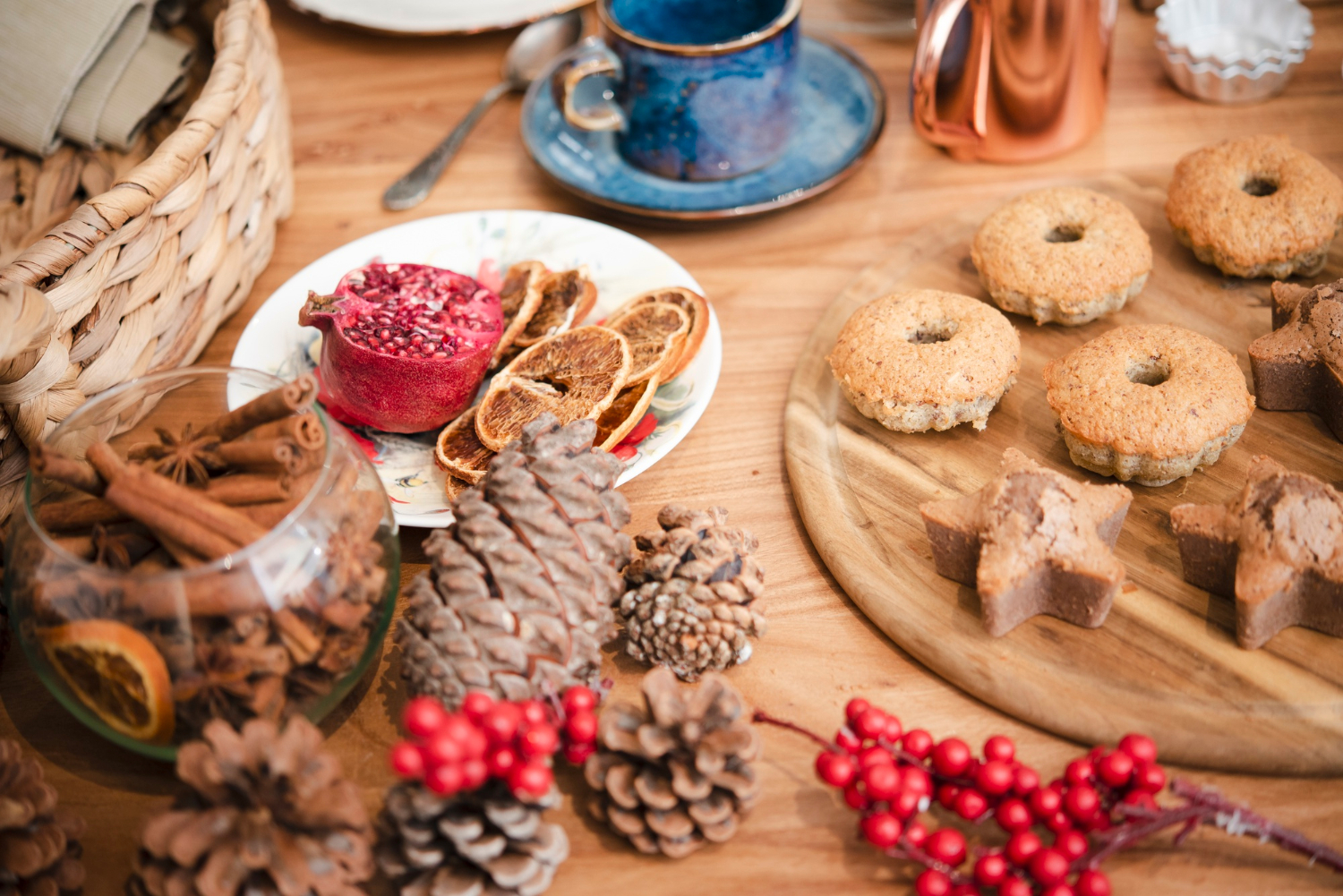The Ideal Lithuanian Christmas Eve Dinner: Symbolic Dishes and Their Importance

The Ideal Lithuanian Christmas Eve Dinner: Symbolic Dishes and Their Importance
In Lithuania, Kūčios, the Christmas Eve dinner, is one of the most cherished traditions of the holiday season. This meal is not only about food, but also about symbolism, spirituality, and the honoring of family bonds. Traditionally, the Kūčios dinner includes twelve dishes, each representing one of the twelve apostles or, in some interpretations, the months of the year. These dishes are prepared with love, care, and respect for tradition, and they hold deep meanings that reflect the values of the Lithuanian people. Here are the ideal dishes for the Kūčios table and their significance:
1. Šaltibarščiai (Cold Beetroot Soup)
This vibrant and refreshing cold beetroot soup is often served at the beginning of the meal. Made from grated beets, kefir or sour cream, and cucumbers, it is typically served chilled with a side of boiled potatoes. The pink color of the soup symbolizes prosperity, and its refreshing taste provides a perfect contrast to the heavier dishes that follow.
2. Kūčiukai (Traditional Christmas Eve Pastries)
These small, slightly sweet, anise-flavored pastries are a key feature of the Kūčios dinner. The little bread cubes are often dipped in poppy seed milk (which is also served during the meal). Kūčiukai represent the life-giving power of bread, and they are a reminder of humility and simplicity. The act of dipping them in the milk is symbolic of the abundance and blessings of the coming year.
3. Poppy Seed Milk (Agurka)
A key element of the Kūčios meal, poppy seed milk is made by grinding poppy seeds and mixing them with water or milk. It’s a calming, mildly sweet drink that is served alongside the Kūčiukai. The poppy seeds symbolize fertility, peace, and abundance, while the milk represents purity and nourishment.
4. Mushroom Soup
Mushrooms are a central part of Lithuanian cuisine, and a mushroom soup is often served during Kūčios. This earthy dish, made with wild mushrooms, potatoes, and sometimes barley or rice, connects the dinner to the natural world, symbolizing humility, the importance of the land, and the harvest. It’s a reminder of the abundance that nature provides, especially during the winter months.
5. Boiled Potatoes
Simple and hearty, boiled potatoes are a staple of the Kūčios table. Potatoes symbolize the earth’s abundance and are a humble yet essential part of the meal, serving as a foundation for the other dishes. They are often paired with cold beetroot soup or mushroom dishes, adding a comforting element to the dinner.
6. Herring (Silkė)
Herring is a popular dish on the Kūčios table, usually served with onions, oil, and sometimes apples or other ingredients. It represents the importance of fish as a symbol of fertility and sustenance. The use of herring is also connected to the tradition of fasting before Christmas, as it is one of the few animal products allowed during the period of abstinence.
7. Carp
Carp is traditionally served at Kūčios, symbolizing prosperity and good luck for the coming year. The fish is often prepared in a variety of ways, including fried or cooked in a flavorful broth. It is believed that eating fish on Christmas Eve brings harmony and well-being to the family.
8. Sweet Poppy Seed Dish (Poppy Seed Dessert)
In addition to the poppy seed milk, a sweet poppy seed dish is also served as part of the meal, typically mixed with honey or sugar. This sweet, nutty dish symbolizes the sweetness of life and is a reminder of the blessings that will come in the new year. Poppy seeds, with their deep cultural and spiritual significance, are considered a symbol of life, abundance, and fertility.
9. Cabbage Rolls (Golubtsy)
Stuffed cabbage rolls, filled with rice, mushrooms, and sometimes barley or vegetables, are another beloved dish. The cabbage symbolizes health and protection, while the rice and grains inside are a symbol of abundance and prosperity. This dish represents the harmony between the earth and the harvest, offering nourishment and sustenance.
10. Stewed Fruits (Kompotas)
This sweet fruit compote is typically made from dried fruits such as apples, pears, and plums. It is served as a refreshing, sweet drink and symbolizes the joy and sweetness of life. The dried fruits are a reminder of the cyclical nature of life, and the compote represents the harvest’s bounty preserved for the winter months.
11. Grain-Based Dishes (Krupnikas or Barley Dishes)
Barley or other grains are often used in Kūčios dishes, symbolizing abundance, sustenance, and the importance of the harvest. Grain-based soups, porridges, or side dishes serve as reminders of the hardworking ancestors who cultivated the land and ensured the survival of the family through the long, harsh winters.
12. Vegan and Plant-Based Dishes
In line with the traditions of fasting and abstaining from animal products, many Kūčios dishes are plant-based. This includes a variety of vegetable salads, pickled vegetables, and other dishes made from root vegetables, cabbage, and beans. The focus on plant-based food reflects the importance of moderation, simplicity, and respect for nature.
Symbolism Behind the Twelve Dishes
Each of the twelve dishes at the Kūčios dinner represents one of the twelve apostles, reflecting the religious significance of Christmas Eve. It is believed that sharing twelve dishes with loved ones brings blessings, peace, and prosperity in the coming year. The meal is not only a celebration of food but also a time for reflection, gratitude, and a reaffirmation of family and community.
In Conclusion
The Kūčios dinner is a celebration of both faith and tradition, where food is more than just sustenance. Each dish on the table has deep symbolic meaning, representing the connection between nature, family, and the spiritual world. By sharing this special meal, Lithuanian families honor their heritage and look forward to the new year with hope, peace, and abundance.









